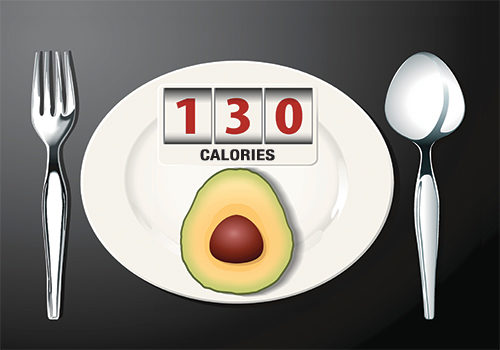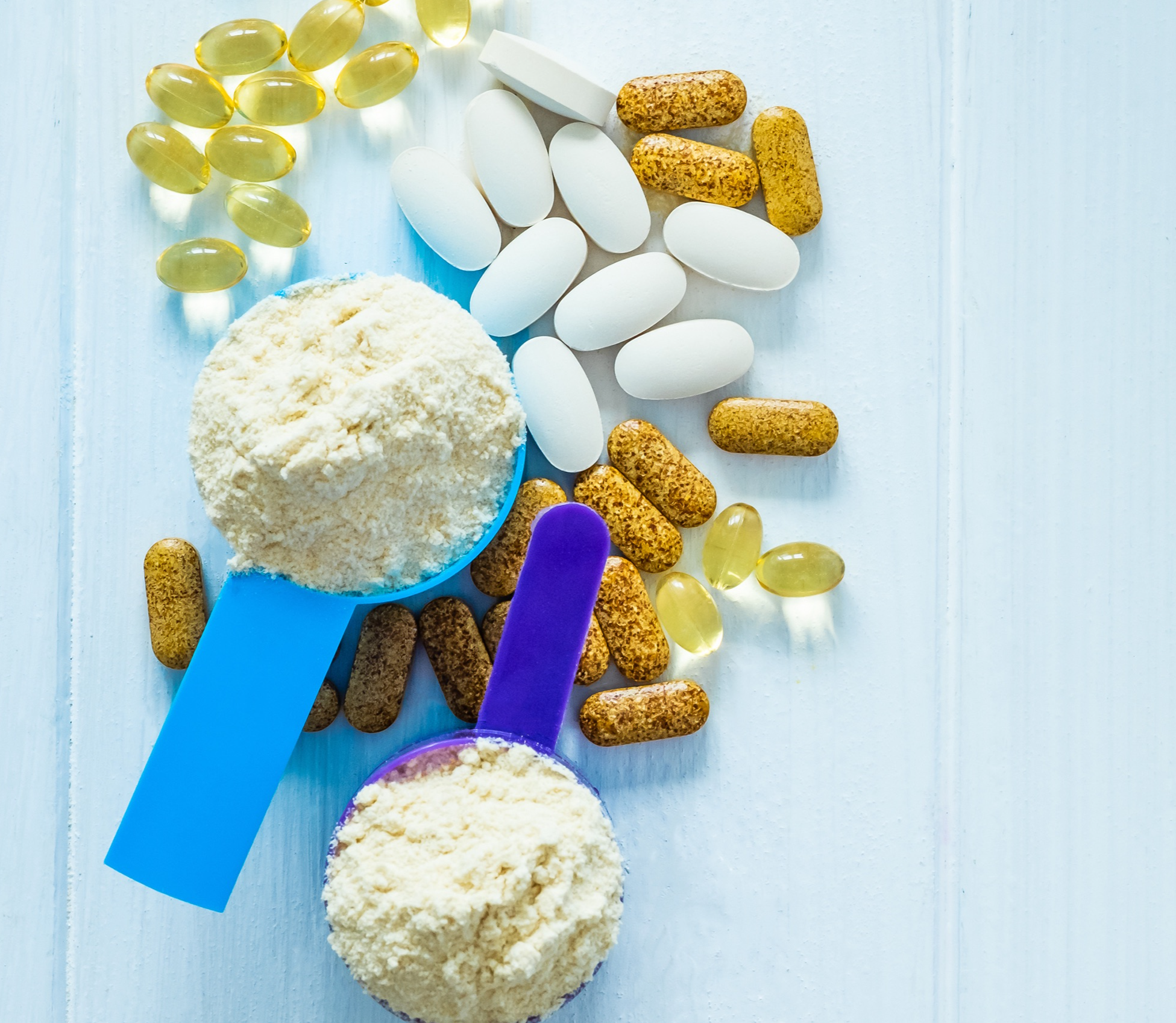Say “weight management” and most people think exercise and calorie counting. While exercise is essential, is a blanket recommendation to concentrate on low-cal meals outdated?
Chew On ThisWhile sensible eating and portion control are always smart ideas, focusing on low-calorie dieting may not be the best nutritional option for everyone. The problem is that it is too general and doesn’t take nutrient density into account. There’s a big difference between high-nutrient foods (like fruit, seeds and nuts) and low-nutrient foods (like a popsicle). Both may work calorie wise, but both are not ideal choices for healthy weight management.
 High-nutrition options—portion controlled—offer valuable nutrients, protein and fiber and contribute to satiety, regularity, sustained energy levels and general wellness. All are valuable to those seeking a healthy weight and a healthy lifestyle.
High-nutrition options—portion controlled—offer valuable nutrients, protein and fiber and contribute to satiety, regularity, sustained energy levels and general wellness. All are valuable to those seeking a healthy weight and a healthy lifestyle.Luis Echeverria, chia seeds and probiotics specialist at Unique Biotech, Miami, FL, says, “I think a lot of people, especially when buying bars and smoothies for healthy weight management, are interested in protein and fiber…There’s a large interest and growing market for plant protein sources of both fiber and protein.”
So, which nutrient-dense foods/ingredients/oils are best for dieters to “spend” their calories on?
Hemp.Hemp products are popular, and for good reason. They pack a serious nutritional punch. Shelled hemp seed (serving size one ounce) contains 162 calories, but provides about 21% of the daily value (DV) of protein (10 grams) (1). States Arthur Mullin, MA, board-certified in holistic nutrition and product specialist at Navitas Naturals, Novato, CA, “Protein is well known to help build and maintain muscle mass, as well as keep blood sugars low and cravings at bay.”
Other formats provide even more concentrated servings of protein. Take hemp protein powder, for instance. “The fat is removed, leaving behind a fiber-rich, protein-dense powder that is higher in nutrient density overall (and therefore lower in calories),” Mullin explains.
Hemp also provides dietary fiber and valuable minerals. In that same one-ounce size, shoppers would get 45% of the DV of magnesium, 15% of iron and 21% of zinc. It is also loaded with amino acids. Hemp also appeals to shoppers because of its healthy fats content. Says Madalyn Crum, associate communications manager at Nutiva, Richmond, CA, “Hemp seed is the richest known source of polyunsaturated fats, containing a perfect 3:1 ratio of omega-6 linoleic acid and omega-3 linoleic acid.”
Chia.Chia is another heavy weight in the “nutrient-dense foods” category. What will one ounce of chia seeds buy you? Some serious appetite control and great nutrition.
“With their exceptionally high fiber, healthy fats and trace minerals, think of chia seeds as your go-to way to curb cravings and help control appetite,” Mullin states. Don’t expect to want a big lunch if chia is on the menu for breakfast. “Beloved by athletes and dietitians alike, chia seeds contain a plant-based substance called mucilage, which expands the seeds during digestion and keeps us feeling full at a low calorie cost,” Mullin explains.
 One ounce of chia may add 137 calories, but the tradeoff is getting 42% of the DV for fiber (that’s 11 grams!) (1).Echeverria states, “Chia has a very high concentration of fiber. We’re talking 30–36% of the product is fiber.”
One ounce of chia may add 137 calories, but the tradeoff is getting 42% of the DV for fiber (that’s 11 grams!) (1).Echeverria states, “Chia has a very high concentration of fiber. We’re talking 30–36% of the product is fiber.”In an online piece, Joseph Mercola, D.O., states, “High-fiber diet rivals calorie restriction for weight loss” (2). He reviews the findings of a recent study involving 240 prediabetics. Half were given a reduced-calorie diet that also limited saturated fat, or a plan that added at least 30 grams of daily fiber from fruits, vegetables and whole grains. Neither group was given any specific requirements for exercise.
After a year, both groups lost about the same amount of weight, suggesting that simply adding fiber to the diet is an important way to maintain a healthy weight.
Chia also serves up 18% of the DV of calcium and 9% of protein. Moreover, Crum says that chia seeds are packed with omega-3s and rare antioxidants. She states, “A three-tablespoon serving of chia seeds contains 30% more antioxidants than blueberries, two times more potassium than bananas and 15 times more magnesium than broccoli.”
And don’t forget about the omega-3s. According to Janie Hoffman, CEO and founder of Mamma Chia, Carlsbad, CA, chia seeds have eight times more omega-3s than salmon.
Another great thing about chia is how easily it can be incorporated into the diet. Says Hoffman, “Chia, our central ingredient, is one of the most nutrient-rich foods on the planet and is neutral in flavor. This allows us to develop foods and beverages that are not only nutritious, but also delicious…They truly deserve their ‘superfood’ status.”
Other nuts and seeds.Mullin says that in addition to hemp and chia, other nuts and seeds like almonds and pumpkin seeds are “superfoods rich in healthy fats that keep us feeling full while staying slim.” A nice offering of monounsaturated fats, vitamins (especially vitamin E), and minerals makes them great snack options for anyone interested in healthy weight management.
 Stephanie Perruzza, MS, RD, CDN, registered dietitian and health and wellness communications specialist at KIND Healthy Snacks, New York, NY, says that her company firmly believes in “the nutritious power of nuts.” She says that products that incorporate premium nuts, seeds and whole grains are key for anyone that wants to maintain a healthy weight.
Stephanie Perruzza, MS, RD, CDN, registered dietitian and health and wellness communications specialist at KIND Healthy Snacks, New York, NY, says that her company firmly believes in “the nutritious power of nuts.” She says that products that incorporate premium nuts, seeds and whole grains are key for anyone that wants to maintain a healthy weight.Cacao. Mullin believes that cacao—that’s right, cacao—is a good option for maintaining a healthy weight. He states, “Chocolate often gets mis-categorized as ‘junk food,’ but certain kinds of chocolate can actually help with slimming...in moderation of course!”
He explains that cacao is the “healthiest form of chocolate” thanks to its large content of antioxidants and minerals, especially iron and magnesium. “It’s the purest and darkest form of chocolate you can find and has no added sugar, so you can feel great about tossing a little into smoothies and desserts, or try adding cacao nibs into granola for a decadent way to start to the day,” he suggests.
Healthy oils.We know that healthy oils are vital to wellness, but shoppers’ knee jerk reaction (thanks to decades of bad advice) is to avoid fats. Jeff Brucker, vice president of marketing at Genesis Today, Austin, TX, makes the case that the opposite is true. He states, “For dieters, it is imperative that they continue to receive key nutrients from nutrient-dense oils that provide multiple functional benefits that support their weight loss goals.”

Crum adds that shoppers shouldn’t be afraid of the kind of saturated fat found in coconut oil as the lauric acid variety is actually very healthy.
Another interesting choice in the kitchen is sacha inchi. Brucker says it tastes similarly to olive oil, and provides omega-3 fatty acids, vitamin E, vitamin A, fiber and protein.
And, Crum believes red palm oil is a great option in the kitchen because of its powerful antioxidant beta-carotene. “The rich buttery flavor of red palm oil makes it ideal for soups, sauces and sautéing, and even great as a healthy popcorn topping,” she adds.
Greens and more.Mullin calls leafy greens “a no-brainer when it comes to slimming superfoods with their exceptionally low calories and massively high nutrients.” His faves to stock up on are kale, spinach, chard and collard greens, which are high in calcium. “High-calcium diets can boost metabolism and help burn fat,” he explains.
Several companies are blending greens and other superfoods into new launches, such as kale and chia drink from Mamma Chia in its new Chia & Greens Beverage, Grateful Greens.
Meanwhile, Thierry Ollivier, CEO of Natierra, says beets are rising to kale’s popularity. “Beets are definitely the new hot product as we’ve seen at recent trade shows and trending headlines, hence why we’ve included it in our flavor line-up for Natierra Chia Crunch,” he states.
Speaking of combinations, Echeverria believes there’s been an uptick in companies interested in incorporating probiotics into their products along side greens, ancient grains and other
 nutrient-dense ingredients. “Many consumers are very concerned about their digestive health,” he states. “Probiotics go hand in hand with fiber to regulate digestive health and boost the immune system.”
nutrient-dense ingredients. “Many consumers are very concerned about their digestive health,” he states. “Probiotics go hand in hand with fiber to regulate digestive health and boost the immune system.”Some research suggests that probiotics use may actually boost weight-management efforts. For 24 weeks, obese men and women either consumed a placebo or Lactobacillus rhamnosus CGMCC1.3724; everyone consumed moderate calorie-restricted diets for 12 weeks, followed by 12 weeks of weight maintenance.
Researchers found that women who consumed the probiotic had significantly more weight loss than the placebo group after the first 12 weeks. In the second 12 weeks, women on probiotics continued to lose weight, while the placebo group did not. Meanwhile, the men in both groups had about the same results as one another.
Pump Up the Plant ProteinThose looking for healthy weight management options often want to increase their protein intake to tame their hunger. Says Perruzza, “Protein has been shown to increase satiety, that feeling of fullness, and when paired with other quality nutrients like healthy fats and complex carbohydrates, the overall combination can help keep you fuller longer.
Several options are available, but the choice shouldn’t be taken lightly. “Choosing high-quality proteins and consuming the right amount are both critical for a healthy diet,” says Hoffman.
Mullin feels that plant-based is best for dieting. “They tend to be less processed, are alkaline-forming and have a limited impact on our environment,” he states, singling out hemp protein as a great option because it is a complete protein. “It contains a rich profile of all of the essential amino acids that our bodies cannot produce,” he explains.
Ollivier is also a fan of plant protein, especially chia, another complete protein. “I love adding protein to my diet to stay healthy. As much as I can, I use vegan protein by adding our Natierra Organic Chia seeds or Organic Toasted Hemp Seeds to my salads, smoothies and soups.”
Hoffman seconds this choice, noting that chi
 a stands out in her mind as an ideal protein choice for weight-management seekers because, “It can be added to everything, and as I mention in my book Chia Vitality, it doesn’t come with the extra baggage of unhealthy saturated fats like many animal-based proteins provide.”
Chia isn’t the only ancient grain/seed to consider. Echeverria says quinoa and aramanth are also complete sources of protein most of the time. “So, that makes these products very attractive,” he believes.
a stands out in her mind as an ideal protein choice for weight-management seekers because, “It can be added to everything, and as I mention in my book Chia Vitality, it doesn’t come with the extra baggage of unhealthy saturated fats like many animal-based proteins provide.”
Chia isn’t the only ancient grain/seed to consider. Echeverria says quinoa and aramanth are also complete sources of protein most of the time. “So, that makes these products very attractive,” he believes.Plus, Echeverria says the taste of these ancient grains is very mild, making them appealing to consumers and formulators alike. “That’s an advantage and one of the reasons why these ingredients have taken off so well,” he believes. He contrasts this with some other plant proteins, which have stronger flavor profiles and are harder to slip into finished products.
Echeverria adds that the price of chia as a wholesale ingredient has dropped and availability is broader than it’s been in the past, so expect to see even more launches with chia in the future. And don’t count out your everyday nuts, seeds, whole grains and legumes. Perruzza feels they are great options, too.
Bars and Shakes: Avoid the TrapsBars and shakes are appealing to shoppers as snacks or a meal replacements. But there are some hidden traps to avoid. For instance, interviewees felt those looking to maintain a healthy weight should go as natural as possible in their nutrient-dense bars/shakes, and choose organic if possible. And, definitely stay away from fillers, artificial sweeteners and ingredients that you either can’t pronounce or don’t understand.
Says Mullin, “Real food ingredients provide hard-working calories that work synergistically with your body, meaning they are absorbable and are therefore more filling and satisfying. If you stick with clean, simple ingredients that are minimally processed, you will find yourself satiat
 ed more quickly and for longer periods of time than when consuming refined foods with empty calories.”
ed more quickly and for longer periods of time than when consuming refined foods with empty calories.”Shoppers should look at the sweetener and avoid those with too much sugar. But, in moderation, Mullin believes coconut palm sugar and yacon syrup “provide the sweetness without causing blood sugar imbalance,” making them good selections for healthy weight management. Plus, yacon offers FOS, which acts as a prebiotic to nourish healthy gut flora.
Also, portion and timing are important for shakes and bars, and this is different for everyone. Says Hoffman, “How an individual uses a bar within their meal plan is going to depend on the weight loss plan they may be following.”
Whether shoppers intend to use these products in lieu of a meal or as a healthy snack, Hoffman offers this advice, be sure it’s nutritious and “satisfies both your hunger and taste buds in order to avoid additional snacking.”WF
See WholeFoodsMagazine.com/grocery for additional grocery coverage.
References 1. Self Nutrition Data, http://nutritiondata.self.com/facts/custom/629104/2, accessed Mar. 3, 2016. 2. J. Mercola, “A High-Fiber Diet Helps Boost Weight Loss,” Mar. 2, 2015, http://articles.mercola.com/sites/articles/archive/2015/03/02/high-fiber-diet-weight-management.aspx, accessed Mar. 3, 2016.
This editorial series is sponsored by


Published in WholeFoods Magazine April 2016










